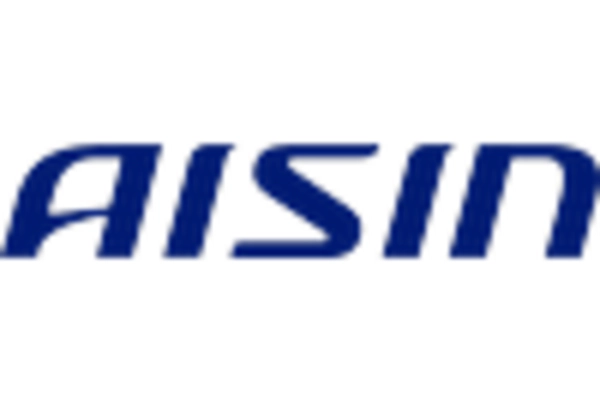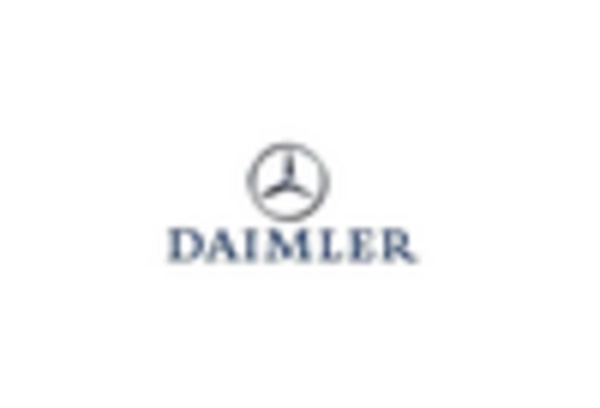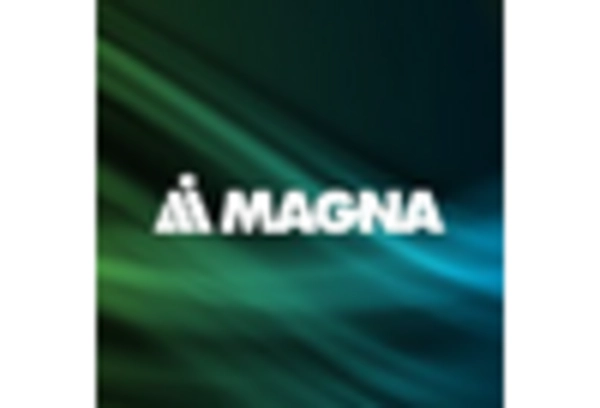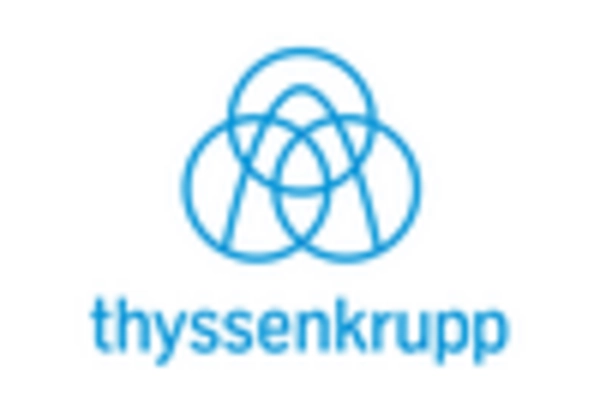Increasing Demand for Electric Vehicles
The Automotive Door Impact Bar Market is witnessing a shift in demand due to the rising popularity of electric vehicles (EVs). As the automotive landscape evolves, manufacturers are adapting their designs to accommodate the unique structural requirements of EVs, which often necessitate enhanced safety features, including advanced door impact bars. The growing consumer preference for EVs is expected to drive innovation in safety technologies, leading to the development of specialized impact bars that cater to the specific needs of electric vehicle designs. This trend suggests a potential increase in market size, as manufacturers invest in research and development to create impact bars that align with the safety standards of electric vehicles.
Regulatory Compliance and Safety Standards
The Automotive Door Impact Bar Market is significantly influenced by stringent regulatory compliance and safety standards imposed by various governmental bodies. These regulations mandate the incorporation of safety features in vehicles, including impact bars that meet specific performance criteria. As a result, automotive manufacturers are increasingly focusing on the development of door impact bars that not only comply with these regulations but also exceed them. The market is expected to witness a steady growth trajectory, with an estimated increase in demand for compliant safety features. This regulatory landscape compels manufacturers to innovate continuously, ensuring that their products align with evolving safety standards, thus driving the overall market.
Rising Consumer Awareness of Safety Features
The Automotive Door Impact Bar Market is experiencing a notable surge in consumer awareness regarding vehicle safety features. As consumers become more informed about the importance of safety in automotive design, manufacturers are compelled to enhance their offerings. This heightened awareness is driving demand for vehicles equipped with advanced safety systems, including robust door impact bars. According to recent data, the market for automotive safety features is projected to grow at a compound annual growth rate of approximately 6.5% over the next five years. This trend indicates that consumers are increasingly prioritizing safety, thereby influencing manufacturers to invest in innovative designs and materials that enhance the effectiveness of door impact bars.
Technological Advancements in Material Science
The Automotive Door Impact Bar Market is benefiting from significant advancements in material science, which are enabling the development of more effective and lightweight impact bars. Innovations in materials such as high-strength steel and composite materials are enhancing the performance of door impact bars, making them more efficient in energy absorption during collisions. This shift towards advanced materials is likely to contribute to a reduction in vehicle weight, which is a critical factor in improving fuel efficiency. As manufacturers adopt these new materials, the market for automotive door impact bars is projected to expand, with a potential growth rate of around 5% annually over the next few years.
Focus on Sustainability and Eco-Friendly Practices
The Automotive Door Impact Bar Market is increasingly influenced by a growing focus on sustainability and eco-friendly practices within the automotive sector. Manufacturers are exploring the use of recyclable and sustainable materials in the production of door impact bars, aligning with consumer preferences for environmentally responsible products. This shift not only addresses environmental concerns but also enhances the marketability of vehicles equipped with sustainable safety features. As the automotive industry moves towards greener practices, the demand for eco-friendly door impact bars is likely to rise, potentially leading to a market growth rate of approximately 4% over the next few years.


















Leave a Comment